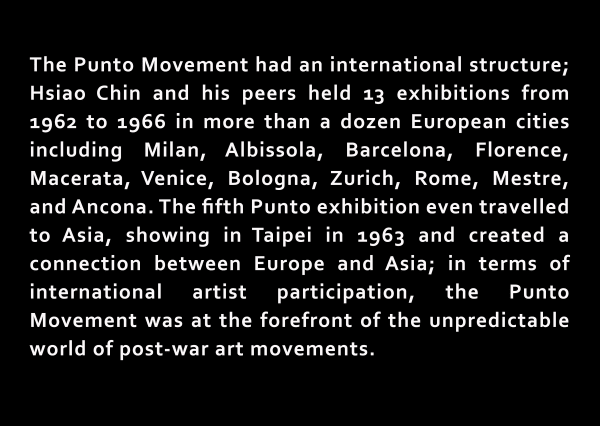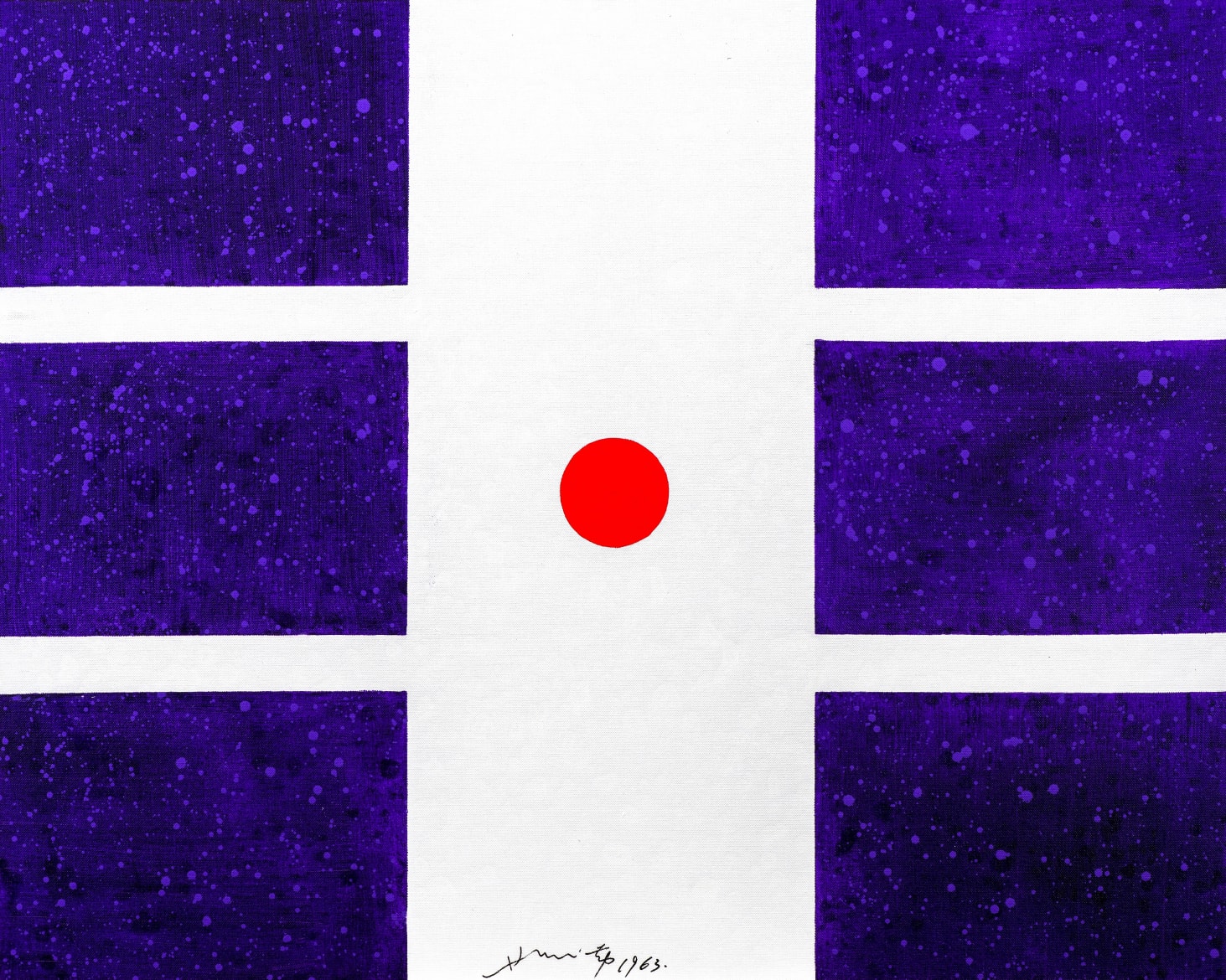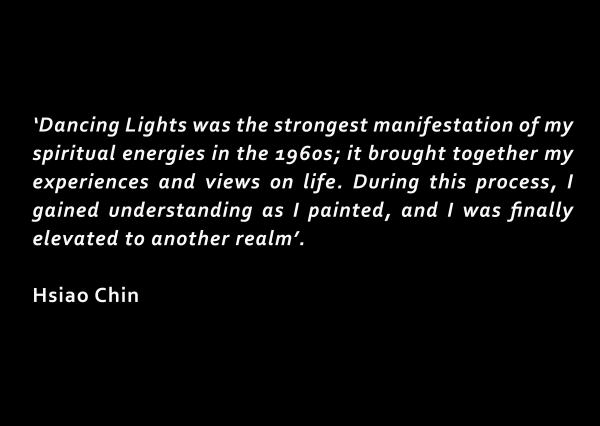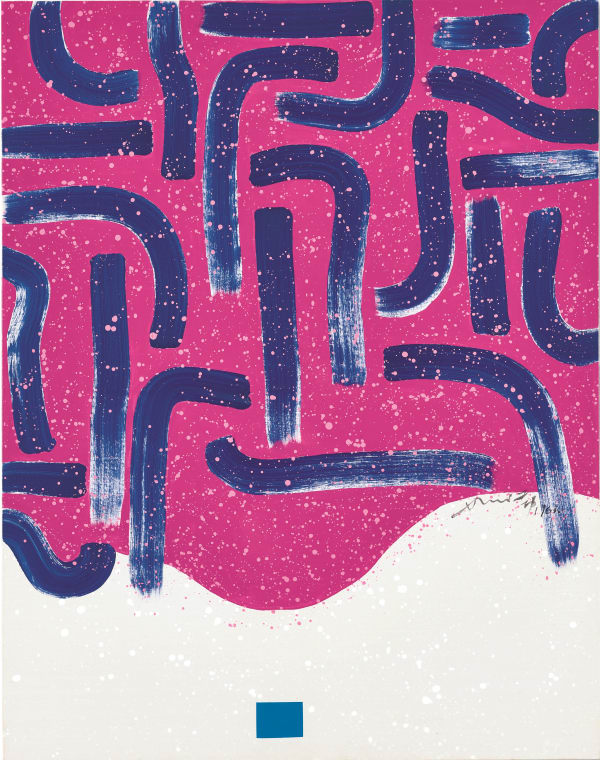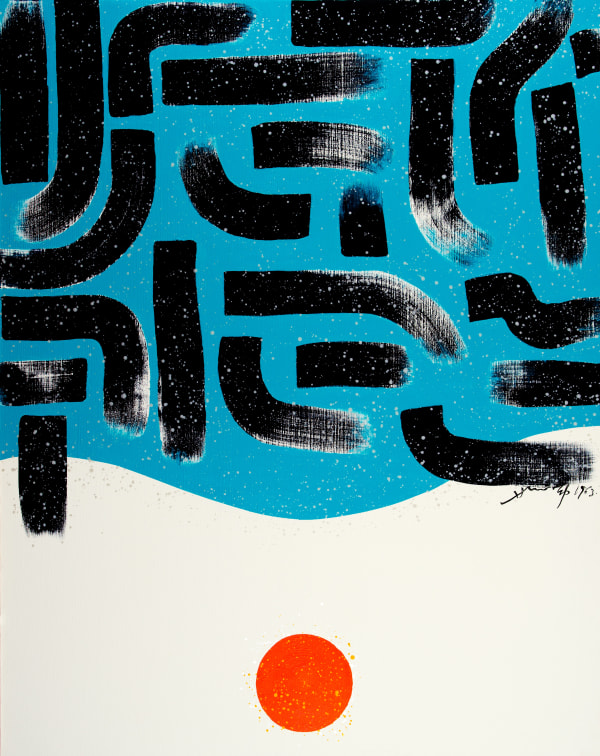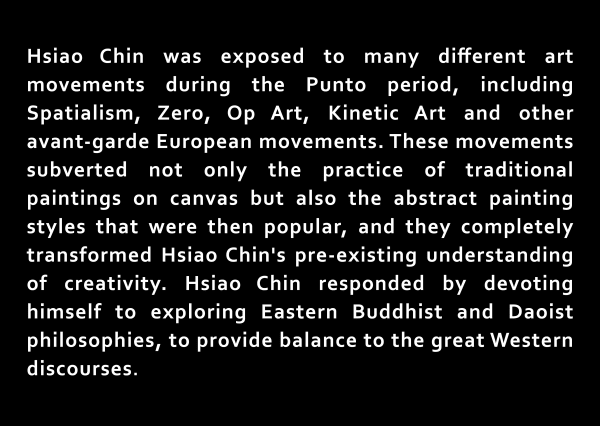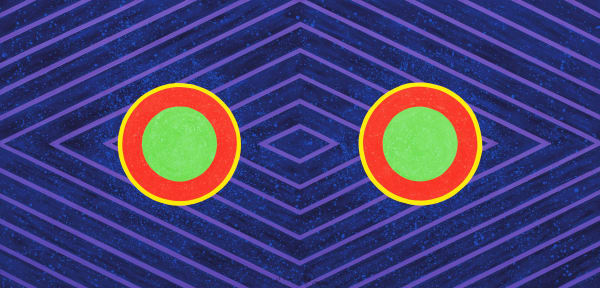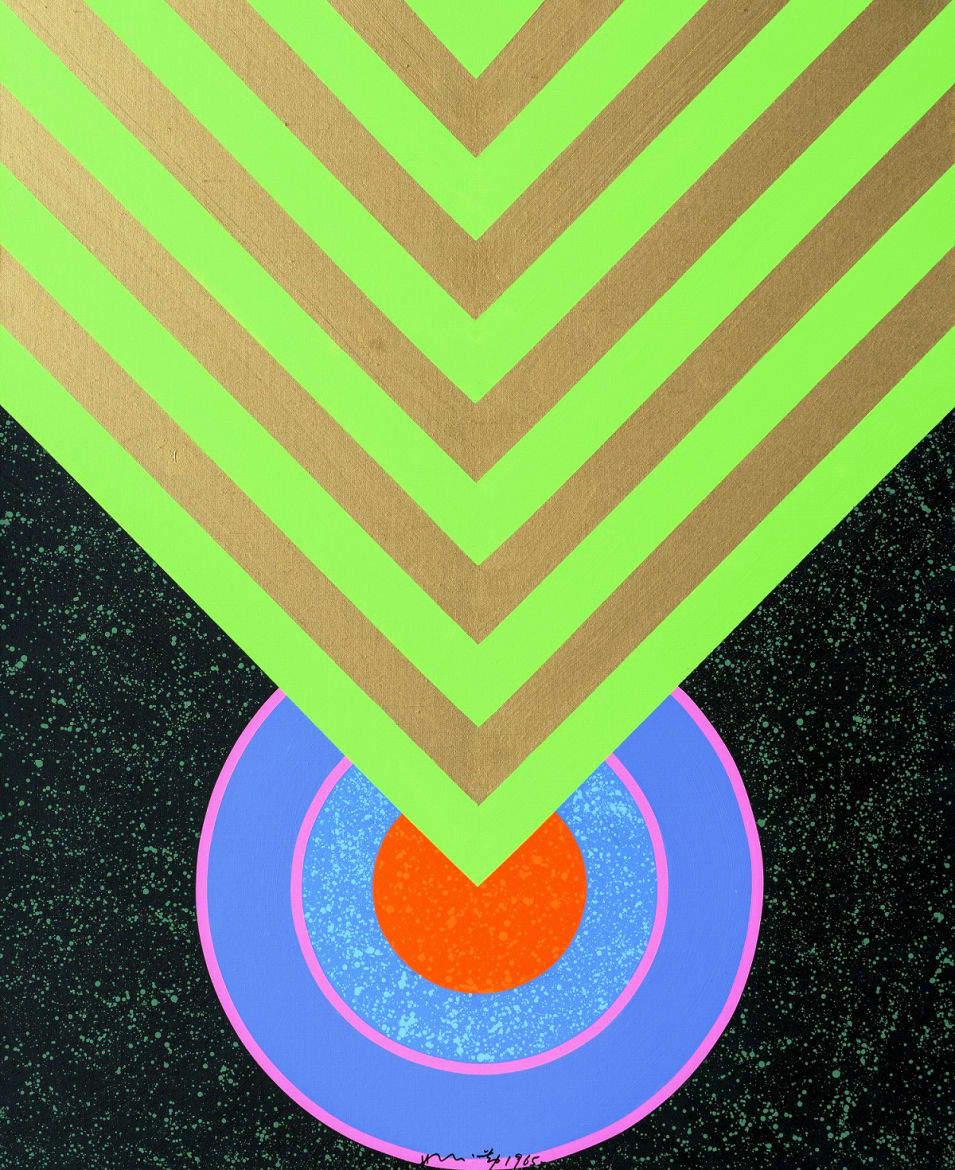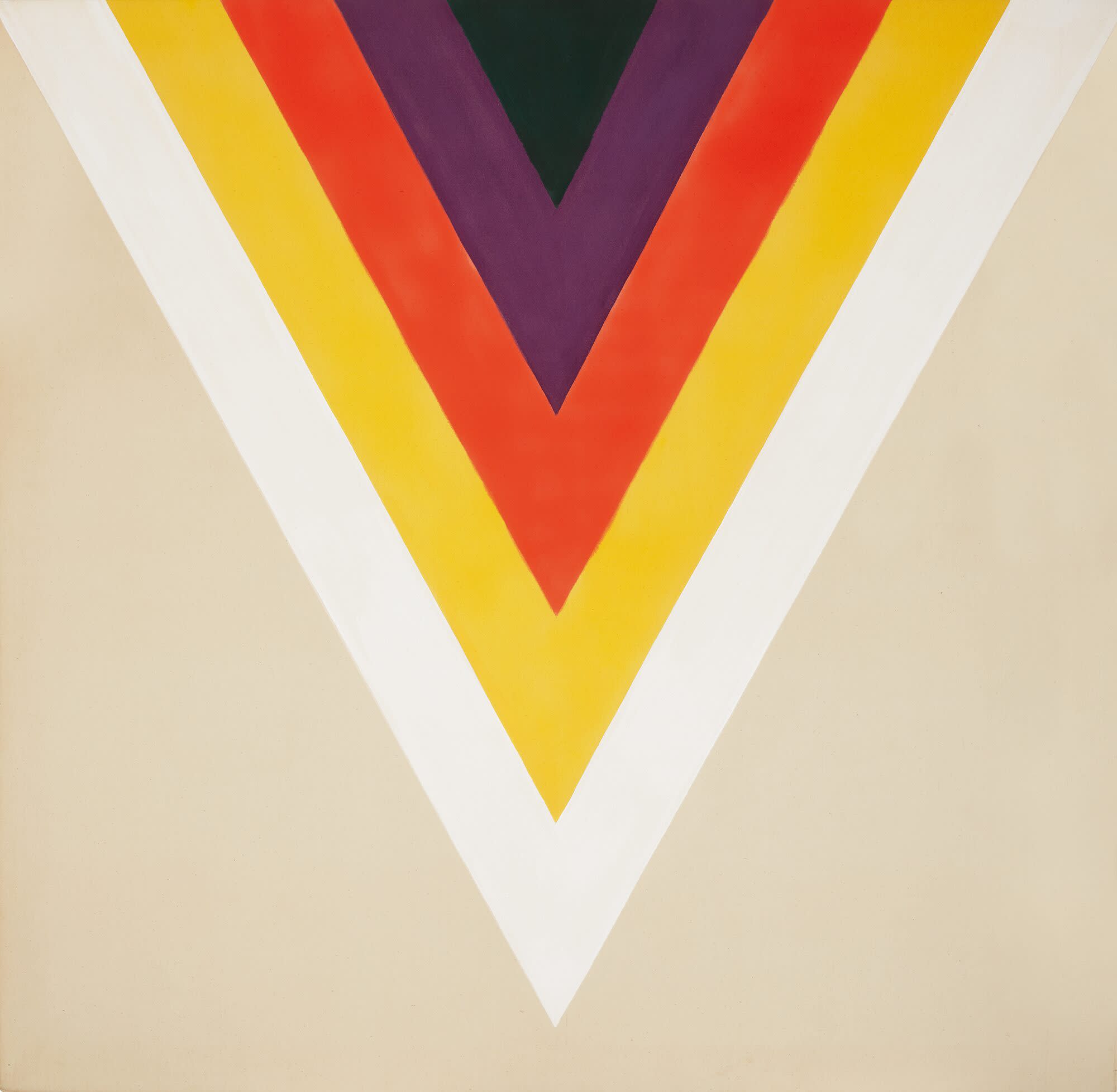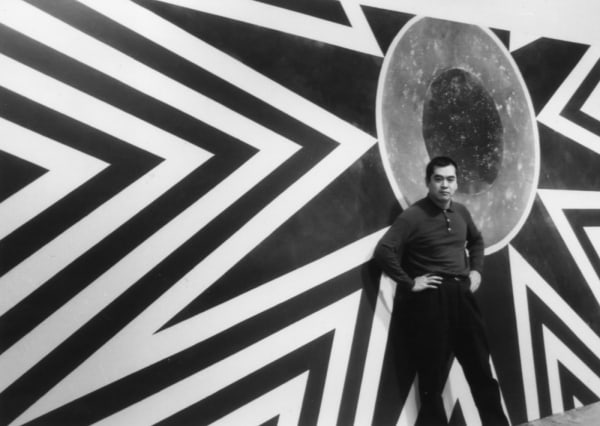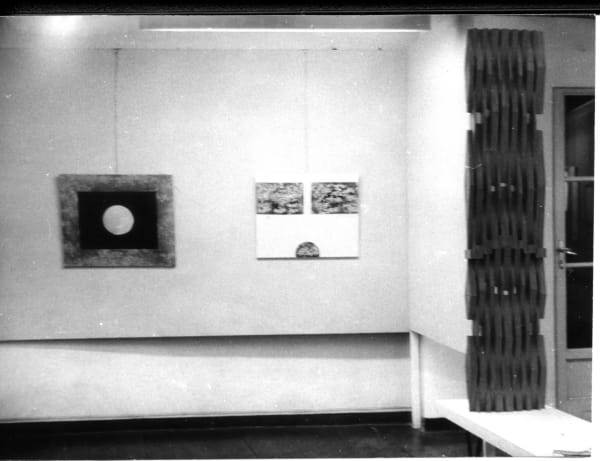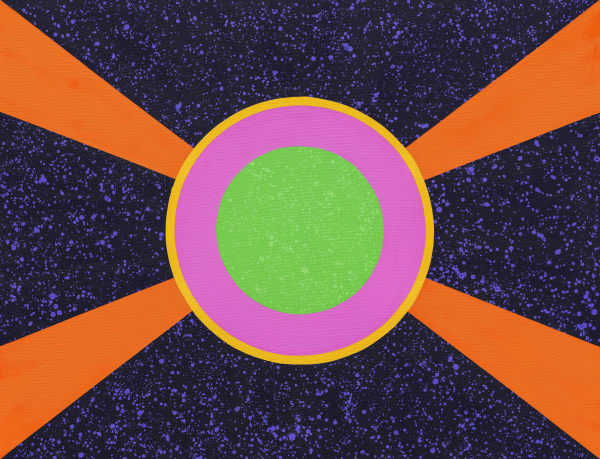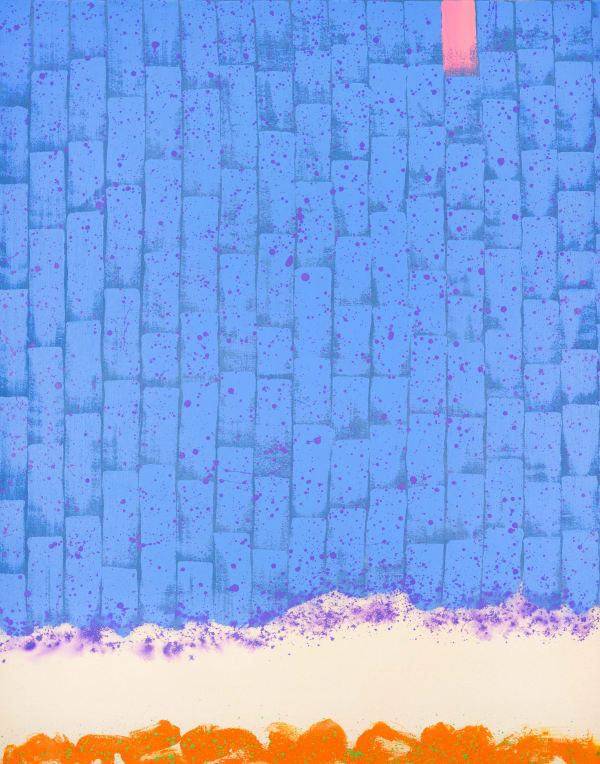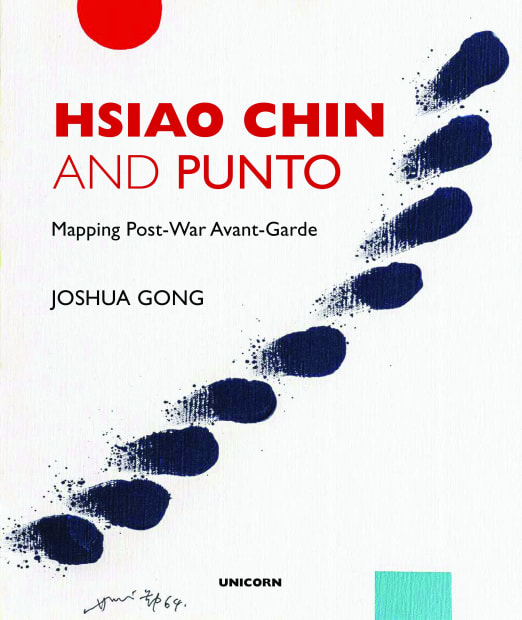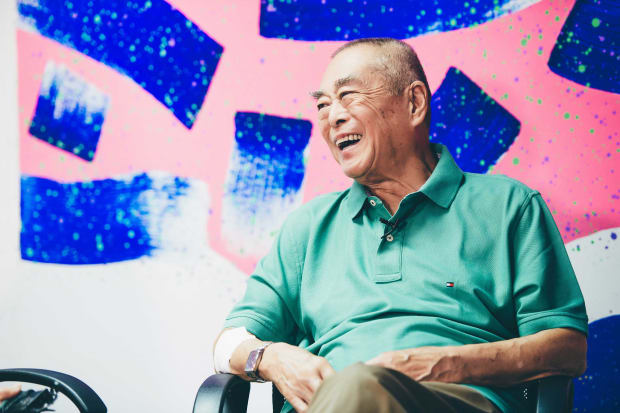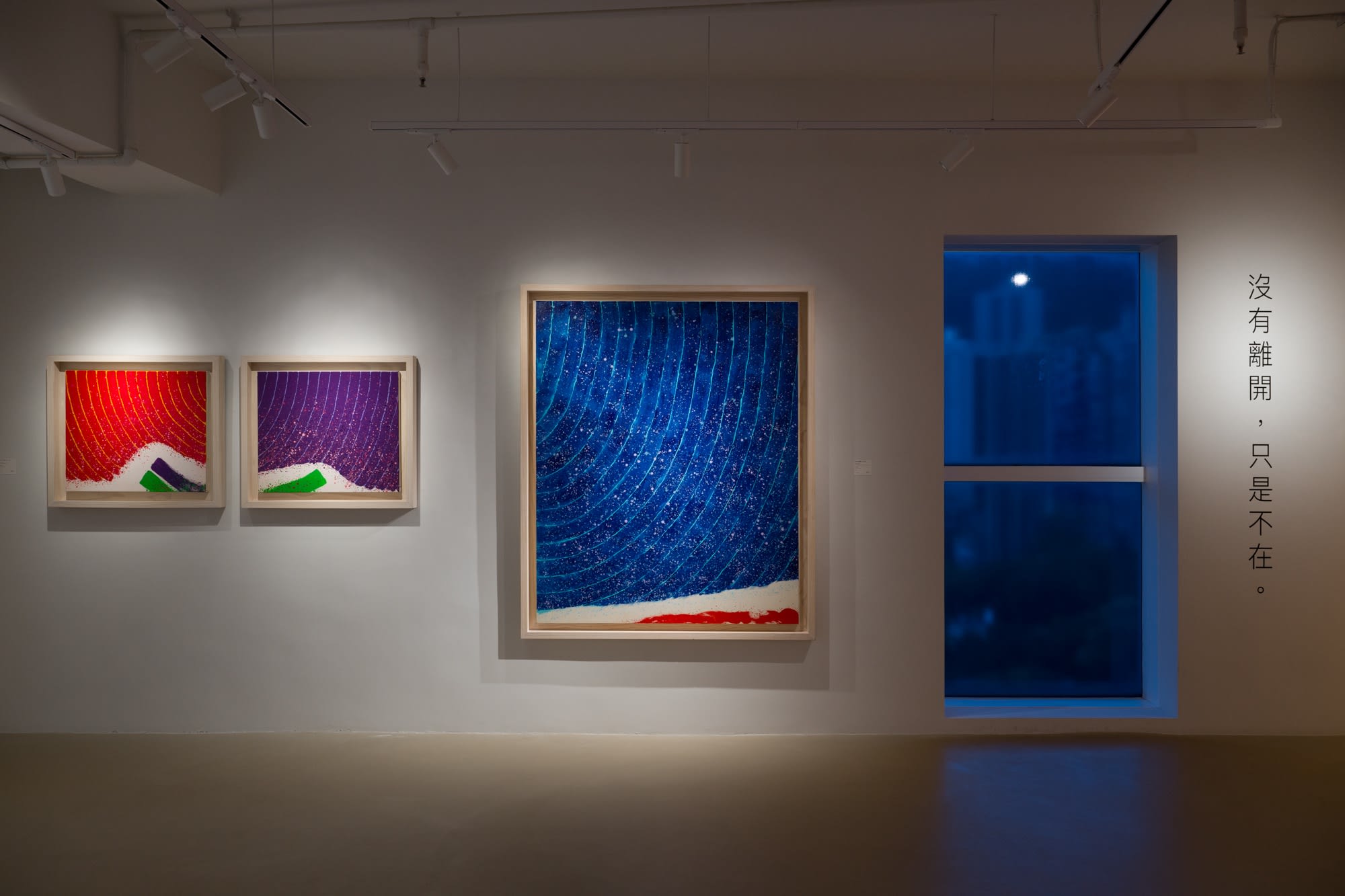-
IN MY BEGINNING IS MY END:
THE ART OF HSIAO CHIN -
“ONE SHOULD ALWAYS TRY TO EXPLORE THE LIMITED PHYSICAL SPACE TO THE MAXIMUM AND TO GENERATE MAXIMUM ENERGY IN THE CONFINES OF SPACE, TO LEARN IN A MATERIAL WORLD THAT TRANSCENDS THE BOUNDARIES OF TIME, AND IN SO DOING TO GRASP THE DEEPER MEANINGS OF LIFE. AND IT IS THROUGH MY AWKWARD BRUSH WORK AND THE BRIGHT PRIMARY COLOURS THAT I ACHIEVE SUCH GOALS.”
Hsiao Chin
-

Hsiao Chin 蕭勤, Il silenzio 靜, 1962
-
“Punto”
The literal meaning of Punto in Italian is “Point”. From a philosophical perspective, it is the basic element and the beginning of all things in the universe, as well as the end of all things, encompassing all things in between. From an artistic perspective, the ‘punto’ flows into the ‘line,’ which expands into the ‘surface’, layers of which become ‘form’. It became a significant symbol in Hsiao Chin’s paintings. In Chinese philosophy, the ‘circle’ also represents the ‘mysterious’ or the ‘black’, pointing to the original state of the universe. For centuries, scholars of taiji have treated the circle as a taiji symbol, and since the Han dynasty, the four mythical creatures in Chinese cosmology (the Azure Dragon, the White Tiger, the Vermillion Bird and the Black Turtle) have been pictured alongside a circular symbol.
-
 Hsiao Chin 蕭勤Great Earth《大地》, 1963Acrylic on canvas 布上壓克力80 x 100cm
Hsiao Chin 蕭勤Great Earth《大地》, 1963Acrylic on canvas 布上壓克力80 x 100cm -
The Dancing Light Series
Hsiao Chin's paintings from the Movimento Punto period are best represented by his Dancing Lights series created in 1963-1964. There are around 20 works in the series, which makes it his rarest from this period. In the Dancing Lights series, Hsiao began to divide his canvases based on a top-heavy 80-20 proportion. This compositional treatment made it easier for the viewer to connect the works with the visual experience of looking up at the sky, and he adopted this "high heavens and vast lands" compositions in his works throughout the 1980s and 1990s.
-
La Vibrazione del Sole, Universal Vibration and The Vibrazione Universale are the exemplary works from Hsiao's Punto period. The twin circles represent the essence of the origins of the universe, and from them, gem-like rays emit outward in an energy field, lending the picture planes a strong sense of movement. This composition of orderly fields of colours clearly shows the influence of Western geometric abstraction of artists such as Frank Stella. However, of greater importance is how these paintings display an all-new artistic approach for Hsiao Chin: an exploration of the secrets of the origins of the universe.
-

-

S.H.Raza, Tree and Bindu, 2008
-
Hsiao once stated that the murals of the Potala Palace in Tibet strongly influenced his creative production during this period, and a close look at the Sacred Map of Shambhala in the Heavenly Light Chamber of the Eastern Sunlight Hall of the Potala Palace, reveals a strong connection with these masterpieces.
In Tibetan Buddhism, Shambhala is a Utopian kingdom that, according to legend, is located near Mount Kangrinboqê, the highest peak in the Kailash Mountains in western Tibet. The Utopian vision of Shambhala is an important subject of the Tibetan art of thangka, in which universal themes of space, time, and cosmic origin are explored.
-
The three concentric circles clearly correspond to the three levels of the Shambhala kingdom as portrayed in thangka and Tibetan murals. The rays radiating from the circles in the passionate space represent an invincible cosmic energy that destroys darkness. The artist took this ancient and wise artistic motif and adorned it in an avant-garde, abstract style. In this way, he not only stimulated Eastern culture, but also contributed a new essence to Western art.
-
The Final Ascendance of Zen & Chi
In 1990, Hsiao Chin experienced a tragic twist in life when his daughter Samantha unexpectedly passed away in Los Angeles. This blow devastated the artist, leaving him unable to create for a long time. However, he emerged having come to an epiphany and painted his classic series: The Eternal Garden, Beyond the Great Threshold, The Sublimation of Samantha, Samadhi and The Bright Side. Although these series have different names, the works embody Hsiao’s realisations about life brought on by the immense pain of his loss. He discovered that the beginning and end of life are just changes in a person’s form of existence. He truly melded a rational understanding of Zen and Daoist philosophy, which he had cultivated since the 1960s, into the softest emotions in his life.
-
 Hsiao Chin 蕭勤Beginning of Chi-2《炁之始-2》, 1983Acrylic on paper 紙上壓克力85 x 186cm
Hsiao Chin 蕭勤Beginning of Chi-2《炁之始-2》, 1983Acrylic on paper 紙上壓克力85 x 186cm -
A Historical Dialogue
-

-

Mark Rothko Art Centre presents...
Past viewing_room











